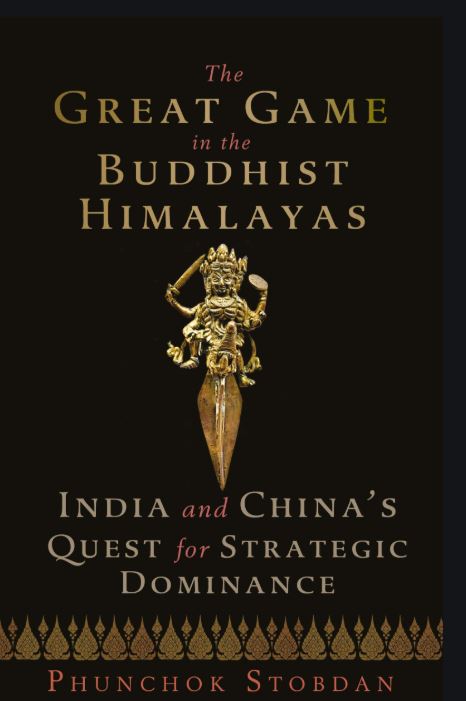Familiar are the patterns of India-China disputes over the borders in the Himalayas, as also the perceived threats emanating from troop build-up, infrastructure development and occasional intrusions by forces. For years, India’s security discourse has been influenced by arrays of challenges posed by China: its friendship with and support to Pakistan, its growing presence in the South Asian region, its expansion of naval reach and an assertive strategic posture. In The Great Game in the Buddhist Himalayas: India and China’s Quest for Strategic Dominance Phunchok Stobdan makes us aware of yet another challenge where the interplay between Buddhism and the Himalayan belt is sought to be utilized by China to create additional spheres of influence, replacing the Indian stronghold over the Himalayan region. The Buddhist Himalayas emerge as a contested geo-cultural landscape with the potential for adverse geopolitical consequences as excessive Tibetan influence pervades institutions in the Indian Himalayan belt from Tawang to Ladakh. Stobdan’s assertion that further intensification of Tibetan culture and language will be leveraged by China is not without merit. He argues that it is a brilliant and flawless execution of China’s strategy to push ‘Tibetanization’ of the Himalayas. Apparently, conflicting territorial claims by both India and China would be much influenced in future on the basis of cultural interests of the people that are linked to geopolitical interests of the States.

The Great Game in the Buddhist Himalayas: India and China’s Quest for Strategic Dominance By Phunchok Stobdan, Penguin, Rs 599 Amazon
Stobdan, a former ambassador with academic tenures in some of the research institutions in India on security and strategic studies, points out that while Tibetan forms of Buddhism are rapidly growing, the Indian Vajrayana Buddhism has undergone a rapid decline. He provides an account of the spread of Buddhism in the Himalayas and of how the institutions remain involved in local power politics. In the process, he explores the history of the rise of the Himalayan States and the mechanisms of the British imperialists, the initial bonhomie between India and China, and then proceeds to explain the seeds of dispute between the two as India offered asylum to the Dalai Lama after the 1959 Tibetan rebellion, eventually leading to the Chinese assault of 1962. While relations improved after a long pause, irritants remained, including their contending positions, especially on the claim over Tawang and on the political use of the persona of Dalai Lama. In an effort to bolster its claim, China has renamed several places in Arunachal Pradesh on the basis of its assertion of “historical, cultural and administrative jurisdiction over the area”. It is interesting also to note the role the Tibetan leaders themselves play in the game of political expediency with inter-Tibetan sectarian strife being vulnerable to political exploitation. Stobdan feels that “India’s deliberate policy to sponsor Tibetan cultural strength will ultimately help the Chinese restore their old hegemonic tributary influence over the Himalayas”. Realizing that India is losing its leadership role in Buddhism, the government now is projecting India’s own Buddhist traditions to reconnect with major Asian Buddhist institutions. But it could be too little too late.
Stobdan’s narrative delves into many sub-themes but the message seems to be that, although geostrategic considerations and matters of high politics clamour for attention on the surface, a nefarious plan finds incremental but steady execution below it, with huge geopolitical implications. Also, the issue of succession of the present Dalai Lama has all the potential to intensify conflict in future. Stobdan suggests that India must understand the dynamic interplay between the Tibetan plateau and the political landscape of the Indian Himalayas and should not allow itself to be ensnared in an agenda that compromises its national interests. The book lacks an engrossing narrative as a plethora of dynamics of India-China relations are dealt with in an arbitrary manner but it provides an intriguing read on the main theme that in itself is rewarding.













